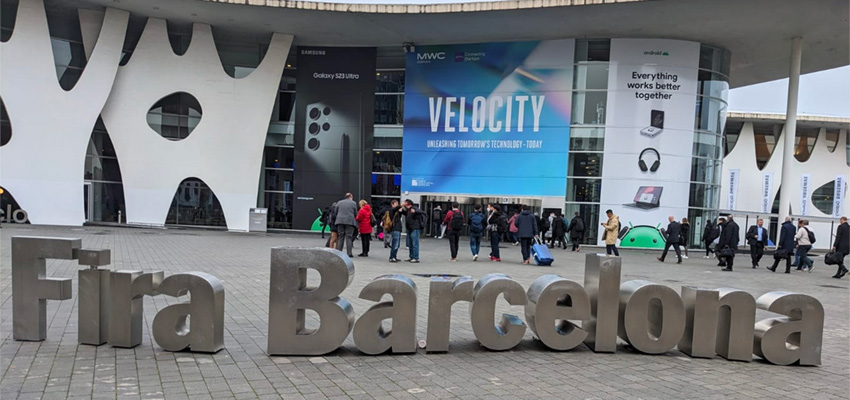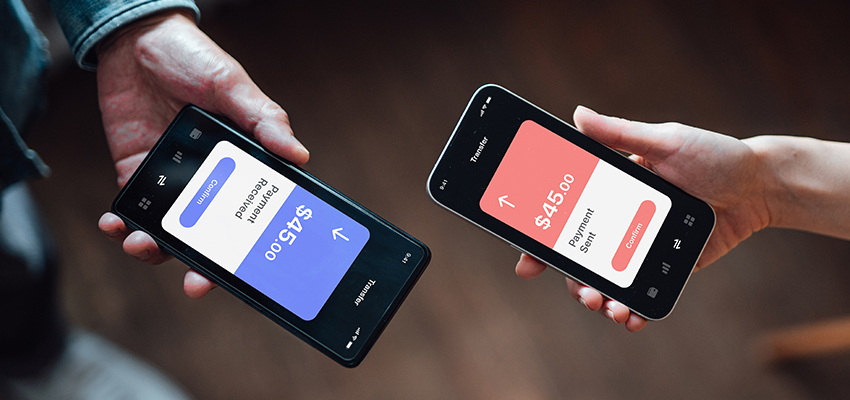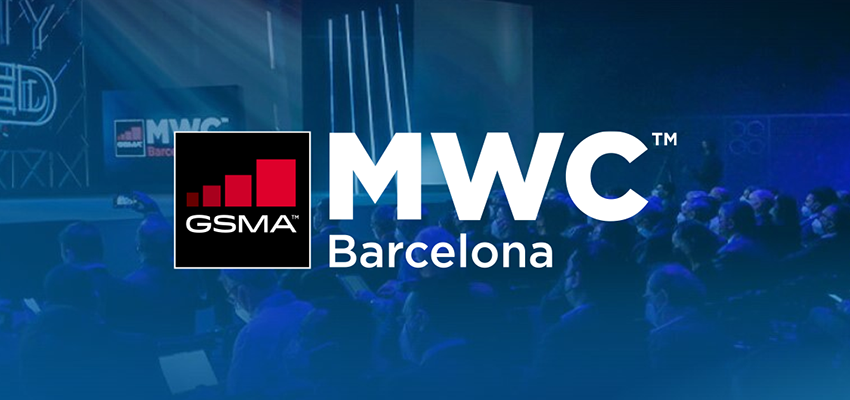Table of Contents
The last thing a company typically does at Mobile World Congress is rebook for the next year’s show. Most of the good 2024 exhibition space is already taken by the end of the 2023 event. But that is standard for Mobile World Congress. It is one of the most popular events on the planet. And for good reason. It’s where the telecom world meets and learns about what’s new in the industry.
What was new at this year’s Mobile World Congress?
I want to briefly take you through what was new at the show and how Allot capitalized on being in Barcelona for the Mobile World Congress 2023 event.
The theme of Allot’s booth this year was ‘World Leading Network Native Security’. This bold statement was printed across the front of the booth to let visitors know that Allot is not just on the cybersecurity map, but all over it. Visitors from around the world came to meet with Allot at MWC to talk about Network-native cybersecurity solutions and network intelligence for telecoms. In the Allot booth, our product experts presented demonstrations of our Secure and Smart solutions while our sales and management teams were busy meeting with customers, new prospects and industry analysts. Over 85,000 attendees showed up this year – a huge boost compared with 2022’s ‘post-Covid’ event.
A few highlights from the 2023 MWC
Around the exhibition space and conference rooms, a number of topics dominated the conversation.
- Gadgets are what the mainstream press come to MWC to cover, and there was a wide range of new products to talk about. New handsets, including foldables and rollables mostly from Chinese handset manufacturers, dominated the consumer coverage of the show. Lenovo introduced a rollable laptop that converted a 13” footprint design into a laptop with a 15” screen. There were new cameras, IoT devices, robots and VR applications. However, nothing seemed to blow away the reviewers this year.
- 5G, of course, was front and center at MWC. With $1.5T slated to be spent on 5G networks over the next 5 years, there was talk about how 5G will revolutionize the future of communication and business. But 5G did not shine through as an absolute need yet. Though there are already 1 billion 5G connections worldwide, few existing 5G-specific applications were demonstrated at the show. The growth of fixed wireless access, private 5G networks, and the transformation of Telcos into Techcos came up in some of the keynotes.
- And speaking of 5G, we were happy to see and hear strong awareness of the need to ensure that 5G networks and users are kept safe and secure in order to take advantage of 5G exponentially greater speeds and connections. Service providers we met expressed the growing concern that 5G’s expanded attack surface and bandwidth could very well mean even more damaging service affecting attacks on their networks as well as putting their consumer and business customers at high risk. There is a greater understanding that built-in security must be bundled into every 5G offering, for both consumers and business customers.
- GSMA Open Gateway – A new set of 8 (so far) APIs designed by the GSMA to provide universal access to operator networks for developers. This initiative was created to help developers and cloud providers enhance and deploy services more quickly across operator networks. It received mixed reviews. While the program has been adopted by 21 operators so far, some detractors claimed it is just another in a line of similar programs launched over the last number of years that did not succeed in achieving their goals. It will remain to be seen if this time the GSMA has gone the right way.
- The Metaverse popped up in keynotes and in booths around the Fira. Still in its infancy, most of the discussion about the Metaverse was about standards and bringing it to the mobile world as a way to accelerate its adoption.
- Nokia’s facelift got a lot of press attention. With a new logo and an impressive booth, Nokia impressed upon the mobile world, once and for all, that they are no longer a handset manufacturer (though Nokia-branded phones are still available following the acquisition of their phone business by Microsoft), but are now focused on networks and industrial digitalization.
- Fair contribution was a topic of discussion from both sides of the argument. While some telcos raised a red flag, worrying that the current financial model for telcos was not sustainable, and that OTT providers should pay their ‘fair share’ for network usage, the OTTs, notably Netflix, argued that ‘Fair Contribution’ payments would cut into production budgets, thereby reducing content quality and eating into already thin profits.
- Network Operators chimed in about the lack of new revenue sources, though they did discuss the new business that 5G can offer them by allocating network slices to enterprises to ensure their business application connectivity, performance and security. Telecoms also noted that they are constantly looking for partnerships with technology vendors to be able to deliver the services that they are promising their customers.
Mobile World Congress is Back!
Overall, MWC 2023 was a success for Allot and the telecom community. Lots of meetings. Lots of new information and a chance to check up on our customers and competitors. I hope that this summary was useful for anyone who did not make it to the show this year. If you missed us at the show, we would still love to hear from you at allot.com/contact-us
FAQ
a. Introduction of new gadgets, including foldable and rollable handsets, IoT devices, and VR applications.
b. Focus on 5G technology and its potential to revolutionize communication and business.
c. Growing awareness of the need for security in 5G networks to mitigate risks for both consumers and businesses.
d. Introduction of GSMA Open Gateway APIs for universal access to operator networks and discussions on the Metaverse.
a. Despite 1 billion 5G connections worldwide, few specific applications were demonstrated at the event.
b. Concerns about the security of 5G networks due to their expanded attack surface and bandwidth, necessitating built-in security measures.
a. Introduction of GSMA Open Gateway APIs to facilitate service deployment across operator networks.
b. Discussions on the Metaverse and its standards for mobile adoption.
c. Nokia's transition from a handset manufacturer to focusing on networks and industrial digitalization.
d. Debates on fair contribution regarding network usage fees between telcos and OTT providers.
e. Exploration of new revenue sources for telecom operators through partnerships and enterprise network slices.


 What is the #1 Success Factor for Neobanks, Digital Banks, and Challenger Banks?
What is the #1 Success Factor for Neobanks, Digital Banks, and Challenger Banks? Command and Control Servers – why do they need to be blocked?
Command and Control Servers – why do they need to be blocked? MWC 2023 preview: What do the 5 new themes mean for the future of mobile?
MWC 2023 preview: What do the 5 new themes mean for the future of mobile?


